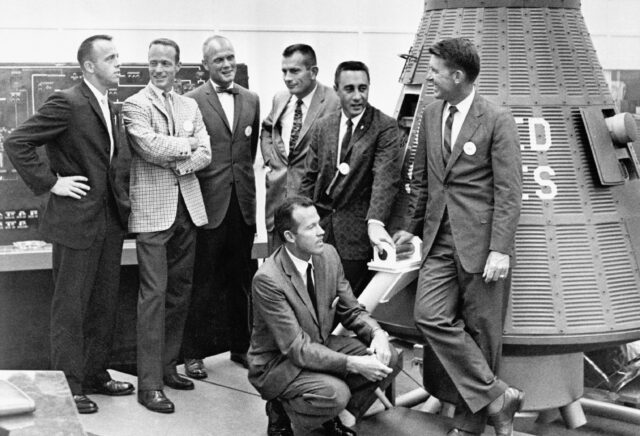NASA Introduces the First Seven Astronauts in America, Known as the “Mercury Seven”
On April 9th, 1959, a landmark event in the history of space exploration took place as NASA introduced the “Mercury Seven,” the first group of American astronauts. These pioneers were Alan Shepard, John Glenn, Gus Grissom, Scott Carpenter, Wally Schirra, Gordon Cooper, and Deke Slayton. Chosen from hundreds of applicants, each of these men possessed the ideal blend of skill, bravery, and physical prowess required for the perilous journey into space. Their mission under the Mercury Space Program was clear: to place an American into Earth’s orbit and return them safely, thereby marking the United States’ foray into manned spaceflight.

Alan Shepard made history as the first American in space with his Freedom 7 mission, while John Glenn became the first American to orbit the Earth, feats that captured the imagination of millions and underscored the United States’ capabilities in the emerging space race. The Mercury Seven not only faced the unknown with unparalleled courage but also laid the groundwork for future endeavors in space exploration, setting the stage for the monumental Apollo missions to the Moon.
More From Us About NASA and their Astronauts: The Extreme Measures NASA Took to Train Its Astronauts for Space
On this April 9th, we look back at the incredible journey of the Mercury Seven, the original astronauts who took us closer to the stars. Their adventures kick-started our dreams of space and still push astronauts and space scientists today to think big and aim far. It’s more than just a cool moment in space history; it’s a reminder that when we mix bravery with big ideas, there’s no limit to where we can go. Here’s to the Mercury Seven, for sparking that fire of curiosity and exploration in all of us!
